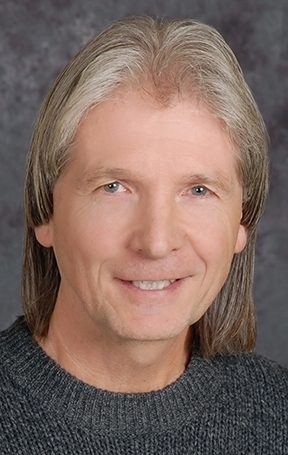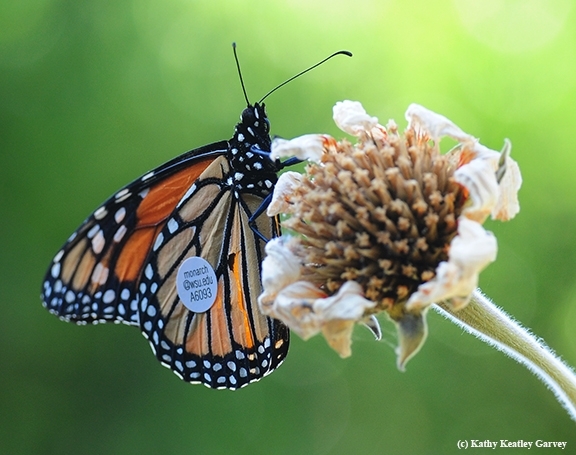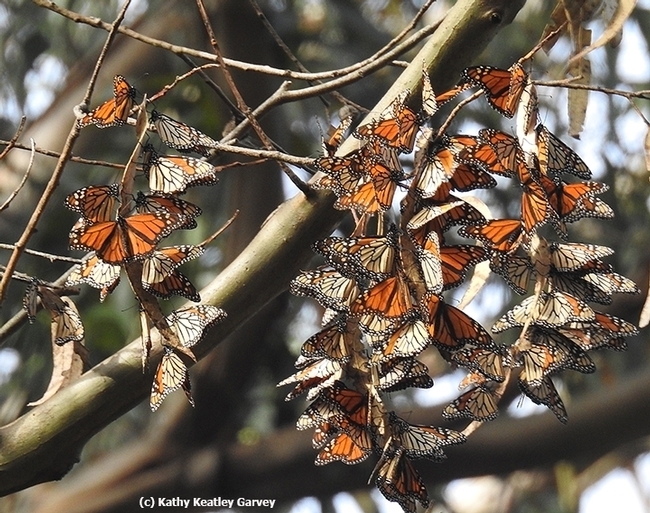
The 2023 International Western Monarch Summit will take place Friday through Sunday, Jan. 20-22 at Pismo Beach, San Luis Obispo, and registration is now underway.
It's a place to learn, to share and to serve.
It's sponsored by Western Monarch Advocates (WMA), which relates its mission is "to serve as an overarching entity to encourage and facilitate communication and interaction of groups and individuals committed to restoring the western monarch butterfly population-regardless of their affiliation or location--in the hope that the shared knowledge will empower each of them to improve and better achieve restoration goals within their own respective affiliation or location."
WMA's co-chair and founder is former adjunct professor Robert Coffan of Southern Oregon University, who is also the co-founder of the Southern Oregon Monarch Advocates and advisor for the Pollinator Project Rogue Valley.
Among the speakers at the monarch summit will be entomologist David James, an associate professor at Washington State University (and a WMA board member) who researches migratory monarchs. He maintains a Facebook page on Monarch Butterflies in the Pacific Northwest (PNW), a portal for monarch butterfly research, conservation and news in the PNW.
"David developed a passion for entomology at the age of 8 in England by rearing caterpillars in his bedroom," the website indicates. "He studied zoology at the University of Salford, UK, then migrated to Australia to work for the New South Wales Department of Agriculture in Sydney researching agricultural pests and their management. A PhD on the winter biology of monarch butterflies in Sydney and a career as a biocontrol and conservation biology scientist in Australia and the U.S. followed. Since 1999, David has been a professor in entomology at Washington State University. David has published more than 250 peer-reviewed scientific papers, extension articles and books and co-authored life histories of Cascadia Butterflies, which was pronounced ‘magisterial' by Sir David Attenborough."
Other scientists speaking at the summit will include Ryan Norris, University of Guelph, Canada; Ek del-Val of IIES-UNAM (Instituto de Investigaciones en Ecosistemas y Sustentabiliad or Ecosystems Research Institute and Sustainability, Mexico; and Myron Zalucki, professor emeritus, University of Queensland, Australia.
The event will include networking, field trips to the overwintering monarch groves, and meals, or as the website indicates, a place..."to come together near our overwintering monarchs for a few days to interact, learn, smile a bit, and most importantly, be more empowered than ever to help restore our western monarch population. Come and join us at the 2023 International Western Monarch Summit!"
Meanwhile, we're waiting for those migratory monarchs from the Pacific Northwest to flutter through our garden on their way to a coastal California overwintering site, as they have in past years.
"It is mid-August, and the Monarch Fall Migration has begun in the PNW," James wrote on the Facebook page. "It starts in the first week of August and reaches a crescendo in the last week of August and the first week of September, at least for WA and ID. A little later in Oregon. Most Monarchs eclosing in the PNW from now until October, will become part of the long-lived (up to 10 months) migratory generation. And there are many Monarchs eclosing now! In the first 2 weeks of August, there have been almost as many sightings of Monarchs in the PNW (153) as there were during the 4 weeks of July (166). There appears to be at least 10 times the number of Monarchs in the PNW this summer as was reported last summer. To date, heat and fires have not been excessive in most areas and I am optimistic we will see a strong migration over the next six weeks. Unless excessive heat intervenes (particularly in CA in September), I am expecting overall overwintering populations to be comparable or greater than last winter. Northerly overwintering sites (from Santa Cruz northwards) should see much larger populations than last winter. Please continue reporting the Monarchs you see and watch out for pristine-looking migrants refueling from your fall garden nectar."
We first connected with Professor James when one of his citizen scientists, Steve Anderson in Ashland, Ore., tagged a male monarch on Aug. 28, 2016 that proved quite the traveler. It stopped to fuel up on nectar in our Vacaville pollinator garden for at least five hours on Sept. 5, 2016. I managed to photograph the monarch. The tag flashed "WSU," an abbreviation of my alma mater, Washington State University. It read “Monarch@wsu.edu A6093." (See Bug Squad blog and WSU news story)
"So, assuming it didn't travel much on the day you saw it, it flew 285 miles in 7 days or about 40.7 miles per day," James related. "Pretty amazing. So, I doubt he broke his journey for much more than the five hours you watched him--he could be 100 miles further south by now."
Maybe we'll see more monarchs traveling through Vacaville this fall.
Related Links:
- David James' Incredible Research on Migratory Monarchs (June 5, 2018, Bug Squad)
- Western Monarch Increase: What Does This Mean? (Dec. 10, 2021, Bug Squad)
Attached Images:

This monarch, tagged by one of David James' citizen scientists in Ashland, Ore., on Aug. 26, 2018, fluttered into a Vacaville pollinator garden on Sept. 5, 2016. "It flew 285 miles in 7 days or about 40.7 miles per day," James related. (Photo by Kathy Keatley Garvey)

Overwintering monarchs in Pacific Grove, Calif., in 2016. (Photo by Kathy Keatley Garvey)